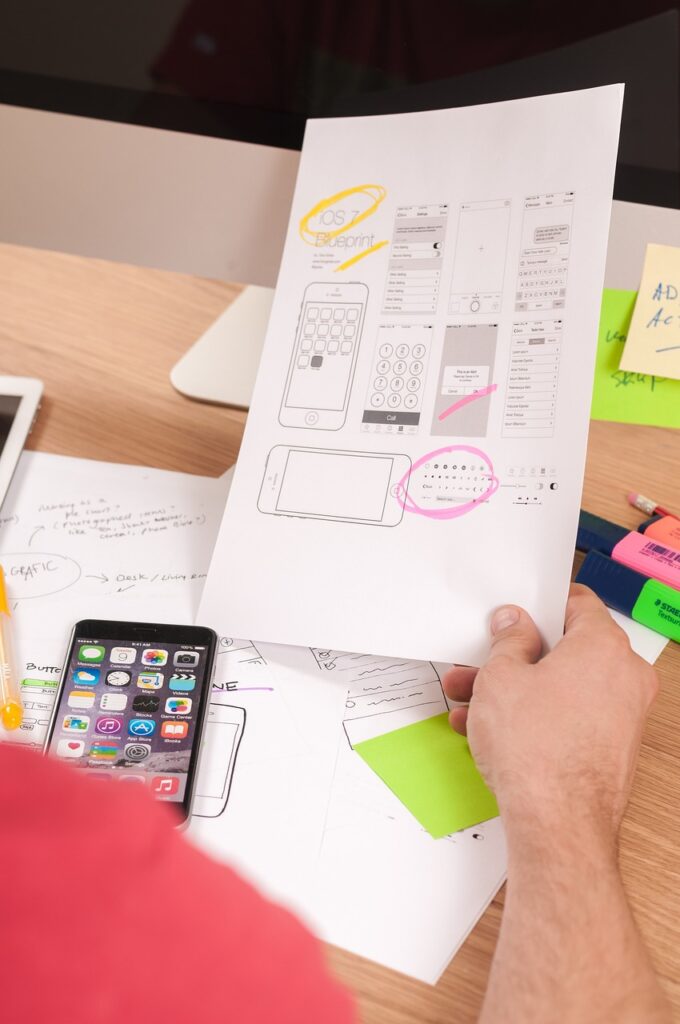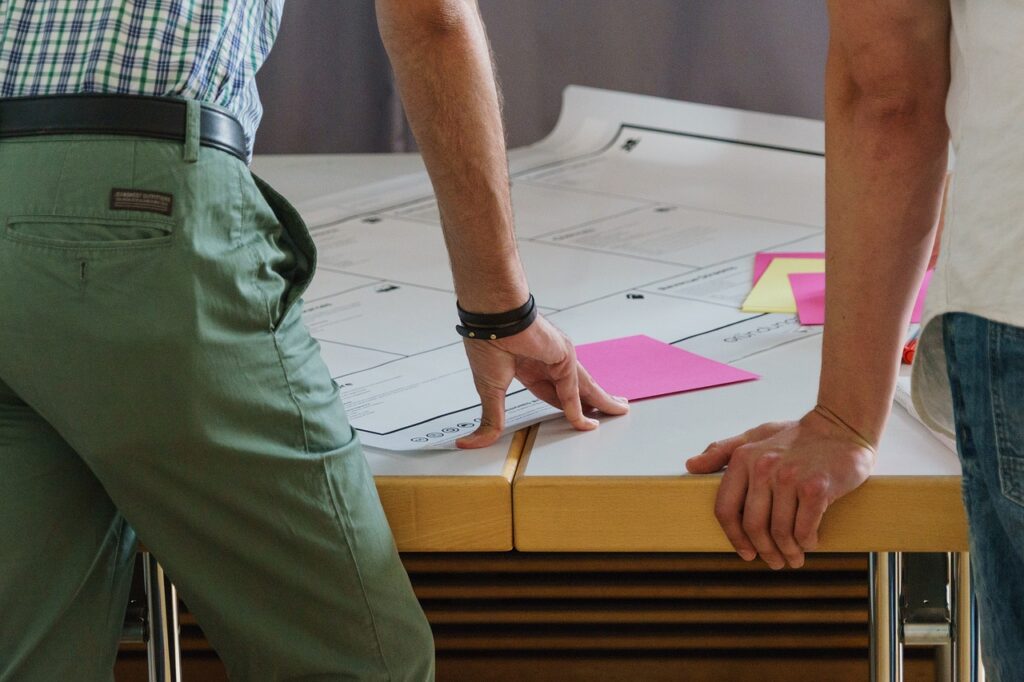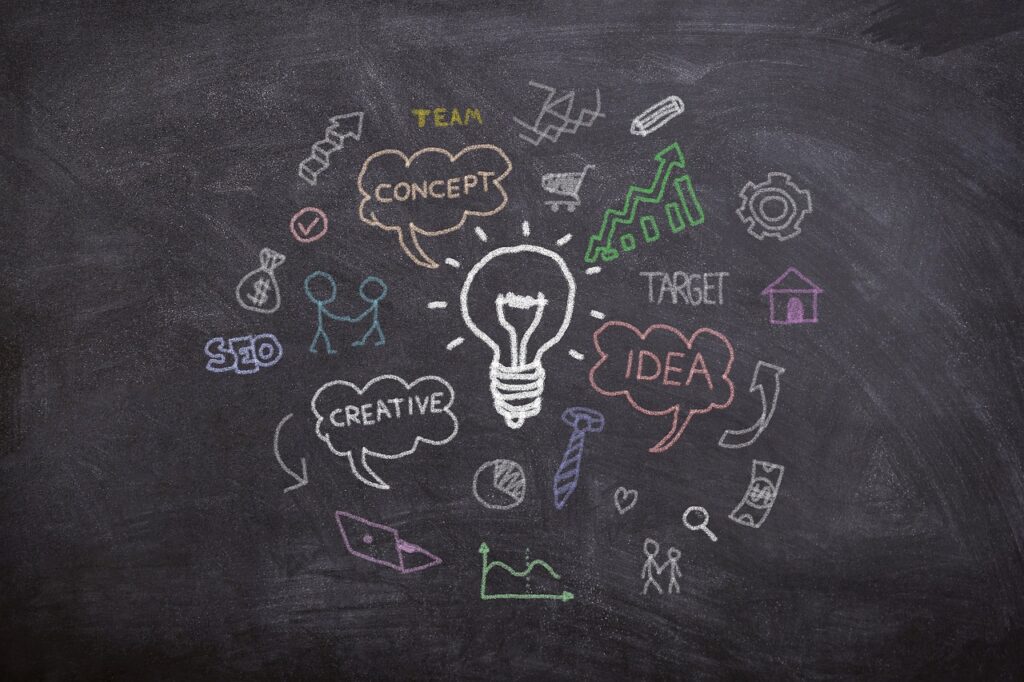So, you’ve got this amazing idea for a new product or service, and you’re ready to bring it to life. But where do you start? How do you ensure that what you’re creating is not only innovative but also user-friendly and effective? This is where rapid iteration in prototyping comes in!

Prototyping is an essential part of the design process, allowing you to quickly test out ideas, gather feedback, and make improvements before moving forward with the final product. Rapid iteration takes this a step further, emphasizing the importance of quick, iterative cycles of design, testing, and refinement to accelerate the development process.
Think of rapid iteration as a series of small experiments that help you learn and improve as you go along. By continuously testing and refining your ideas, you can identify what works and what doesn’t, ultimately leading to a more successful end product.
So, how do you get started with rapid iteration in prototyping? It all starts with setting clear goals and objectives.

Before you dive into prototyping, take the time to define what you hope to achieve with your project. What problem are you trying to solve? Who is your target audience? What are your key success metrics?
By setting clear goals and objectives upfront, you can focus your efforts on what truly matters and avoid getting lost in the weeds. Having a clear direction will not only guide your prototyping process but also help you measure your progress and success along the way.
When setting your goals and objectives, be specific and measurable. Instead of saying, “I want to create a user-friendly app,” try something like, “I want to reduce the time it takes for users to complete a specific task by 50%.” This will give you a clear target to aim for and a way to track your progress as you iterate on your design.
Remember, prototyping is all about learning and refining your ideas. By setting clear goals and objectives, you can ensure that your efforts are focused on creating a product that not only meets users’ needs but also delivers measurable results.
Setting Clear Goals and Objectives
When setting goals and objectives, think about what you want to achieve with your prototype. Are you looking to improve user experience? Test a new feature? Validate a design concept? Whatever it may be, make sure your goals are specific, measurable, achievable, relevant, and time-bound – yes, you’ve guessed it right, SMART goals!
It’s also essential to involve key stakeholders in this process. By aligning everyone on the goals and objectives, you’ll ensure that everyone is on the same page and working towards a common vision. Plus, getting input from different perspectives can lead to innovative ideas and solutions.
Remember, clear goals and objectives act as a roadmap for your prototyping journey. They keep you focused, motivated, and accountable. So take the time to define them upfront, and you’ll thank yourself later when you see your prototype come to life!
Now, grab a pen and paper, or open up your favorite project management tool, and start jotting down those goals and objectives. You’ll be amazed at how this simple step can make a world of difference in the success of your prototyping project.
Utilizing User Feedback for Iteration

So you’ve got your prototype ready, but now what? Well, it’s time to gather some valuable feedback from your users to make those all-important iterations. User feedback is like gold dust in the world of prototyping – it helps you understand what works, what doesn’t, and what can be improved. So let’s dive in and explore how you can make the most of user feedback to enhance your prototype.
Listen to Your Users
First things first, you need to actually listen to what your users have to say. Whether it’s through surveys, interviews, or user testing sessions, pay close attention to their thoughts, opinions, and suggestions. Remember, your users are the ones who will ultimately be using your product, so their feedback is crucial in shaping its success.
Identify Patterns and Trends

As you gather feedback from multiple users, look out for patterns and trends in their responses. Are there common pain points that keep cropping up? Are there any features that users particularly love? By identifying these patterns, you can prioritize which areas of your prototype need the most attention.
Act on Feedback Swiftly
Once you have a clear understanding of what your users want, don’t sit on that feedback – act on it swiftly. Make the necessary changes to your prototype based on the feedback you’ve received. This could involve tweaking the design, refining the user experience, or adding new features. Remember, the sooner you implement these changes, the sooner you can test them out with your users.
Engage in Dialogue
Feedback shouldn’t just be a one-way street. Engage in a dialogue with your users to delve deeper into their feedback. Ask follow-up questions, seek clarification on their suggestions, and involve them in the decision-making process. By fostering a two-way conversation, you can gain deeper insights into what your users truly need and want.
Keep Testing, Keep Iterating
Finally, remember that user feedback is an ongoing process. Keep testing your prototype with users, gathering feedback, and making iterations based on their responses. The key to creating a successful product lies in this continuous cycle of testing and improvement. So don’t be afraid to iterate, refine, and iterate again until you’ve created a prototype that truly meets the needs of your users.
Design thinking is a powerful approach that can significantly improve the prototyping process. By incorporating design thinking principles, you can create prototypes that not only meet user needs but also exceed their expectations. Let’s dive into how you can leverage design thinking to enhance your prototyping efforts.
Understanding User Needs
Design thinking starts with understanding the needs of your users. Before you start prototyping, take the time to conduct user research and gather insights into what your target audience is looking for. By gaining a deep understanding of their pain points, preferences, and behaviors, you can create prototypes that are tailored to their needs.
Empathy for the User
Empathy is a key principle of design thinking. Put yourself in the shoes of your users and try to see the world from their perspective. By empathizing with your users, you can design prototypes that resonate with them on an emotional level and address their underlying needs.
Ideation and Creativity
Design thinking encourages a creative and iterative approach to problem-solving. When prototyping, brainstorm ideas and explore different possibilities. Don’t be afraid to think outside the box and come up with innovative solutions that can delight your users.
Prototyping with Iteration in Mind
Iteration is a crucial part of the design thinking process. Instead of aiming for perfection in the first iteration, focus on creating a prototype that can be quickly tested and improved upon. By embracing iteration, you can gather valuable feedback from users and make incremental improvements to your design.
Collaboration and Feedback
Design thinking emphasizes collaboration and teamwork. Involve stakeholders from different departments in the prototyping process and encourage them to provide feedback. By incorporating diverse perspectives, you can create prototypes that are well-rounded and meet the needs of all stakeholders.
Testing and Validation
Design thinking advocates for testing and validation throughout the prototyping process. Before finalizing your design, conduct usability tests and gather feedback from real users. Use this feedback to refine your prototype and ensure that it meets the needs of your target audience.
Conclusion
By incorporating design thinking principles into your prototyping process, you can create prototypes that are user-centered, innovative, and effective. Remember to empathize with your users, embrace iteration, collaborate with stakeholders, and test your designs to ensure success. With design thinking as your guide, you can create prototypes that not only meet user needs but also deliver a delightful user experience.
Leveraging Prototyping Tools and Technologies
Prototyping is a crucial step in the design process, allowing you to quickly bring your ideas to life and gather valuable feedback from users. By leveraging the right tools and technologies, you can streamline your prototyping process and create more efficient and effective designs.
When it comes to prototyping, there are a plethora of tools and technologies available to help you bring your vision to life. From simple sketching tools to more advanced prototyping software, the options are endless. One popular tool is Adobe XD, which allows you to create interactive prototypes with ease. Another great option is Sketch, which is known for its user-friendly interface and robust design capabilities.
By utilizing these tools, you can quickly iterate on your designs, test different ideas, and gather feedback from stakeholders and users. This iterative process is essential for creating successful designs that meet the needs of your target audience. Plus, with the help of prototyping tools, you can save time and resources by identifying potential issues early on in the design process.
One key benefit of using prototyping tools is the ability to create interactive prototypes that closely mimic the final product. This allows you to test the usability of your design, gather feedback on key features, and make necessary adjustments before moving on to the development phase. By incorporating interactive elements into your prototypes, you can ensure that your final product meets the expectations of your users.
When choosing a prototyping tool, it’s important to consider your specific needs and goals. Look for a tool that aligns with your design process and workflow, and offers the features and functionality you require. Don’t be afraid to experiment with different tools and technologies to find the one that works best for you.
Remember, prototyping is all about experimentation and iteration. Don’t be afraid to try new tools and techniques, and always be open to feedback from others. By leveraging prototyping tools and technologies, you can take your designs to the next level and create products that truly resonate with your target audience.
So, what are you waiting for? Start exploring the world of prototyping tools and technologies today, and take your design skills to new heights!
Establishing an Efficient Feedback Loop

You’ve created your prototype, gathered user feedback, and made some iterations. But how do you ensure that this process is streamlined and effective? That’s where a feedback loop comes in!
First things first, make sure you have a clear feedback mechanism in place. Whether it’s through surveys, interviews, or testing sessions, you need to establish a way for users to provide their thoughts and insights on your prototype.
Once you have collected feedback, it’s crucial to analyze and prioritize the insights. Not all feedback is created equal, so identifying the most valuable suggestions will help you focus on what matters most for improving your prototype.
Next, take action on the feedback received. Implement the necessary changes and updates to your prototype based on the insights provided. This is where the magic happens – turning feedback into tangible improvements!
After making iterations, it’s essential to test the updated prototype with users once again. This will help you validate whether the changes have addressed the initial pain points and improved the overall user experience.
Remember, a feedback loop is not a one-time thing. It’s an ongoing process that should be integrated into every stage of prototyping. Continuously seeking feedback, making adjustments, and testing will lead to a more refined and user-friendly final product.
By establishing an efficient feedback loop, you can ensure that your prototyping efforts are driven by user insights and data. This iterative approach will not only help you create a better product but also foster a user-centric design mindset within your team.
So, the next time you embark on a prototyping journey, don’t forget to prioritize the feedback loop. It’s the secret sauce to creating exceptional user experiences and innovative products!
Key Takeaways:
- Establish a clear feedback mechanism to gather user insights
- Analyze and prioritize feedback to focus on impactful changes
- Take action by implementing necessary iterations based on feedback
- Test the updated prototype with users to validate improvements
- Integrate the feedback loop into every stage of prototyping for continuous improvement
In the world of rapid prototyping, continuous testing and improvement are crucial for the success of your project. Once you have gathered feedback from users and iterated on your design, it is time to put your prototype to the test and see how it performs in real-world scenarios.
Continuous Testing and Improvement
1. User Testing:
One of the most effective ways to ensure the success of your prototype is to conduct user testing regularly. This involves observing how real users interact with your prototype, gathering feedback on their experience, and identifying any pain points or areas for improvement. By involving users in the testing process, you can gain valuable insights that will help you refine your design and make it more user-friendly.
2. A/B Testing:
A/B testing is another valuable tool for evaluating the effectiveness of your prototype. By creating two versions of your design with minor variations, you can test which version performs better in terms of user engagement, conversion rates, or other key metrics. This allows you to make data-driven decisions about which design elements to keep, modify, or discard.
3. Feedback Loops:
Establishing a feedback loop with your team and stakeholders is essential for continuous improvement. By regularly sharing updates, soliciting feedback, and discussing potential changes, you can ensure that everyone is aligned on the project goals and objectives. This collaboration will help you identify opportunities for improvement and make informed decisions about the direction of your prototype.
4. Iterative Design:
Iteration is at the heart of rapid prototyping, and it is important to embrace a mindset of continuous improvement. Rather than striving for perfection on the first try, focus on making small, incremental changes to your design based on user feedback and testing results. This iterative approach allows you to refine your prototype over time and deliver a more polished final product.
5. Metrics and Analytics:
To track the performance of your prototype and measure its impact, utilize metrics and analytics tools. By monitoring key performance indicators such as user engagement, conversion rates, and usability metrics, you can gain valuable insights into how your prototype is performing and where it can be improved. This data-driven approach will help you make informed decisions about the direction of your project and prioritize areas for optimization.
Continuous testing and improvement are essential components of the prototyping process, and they play a key role in shaping the success of your project. By incorporating these practices into your workflow and embracing a culture of continuous learning and adaptation, you can ensure that your prototype evolves into a user-friendly, impactful, and successful final product.
